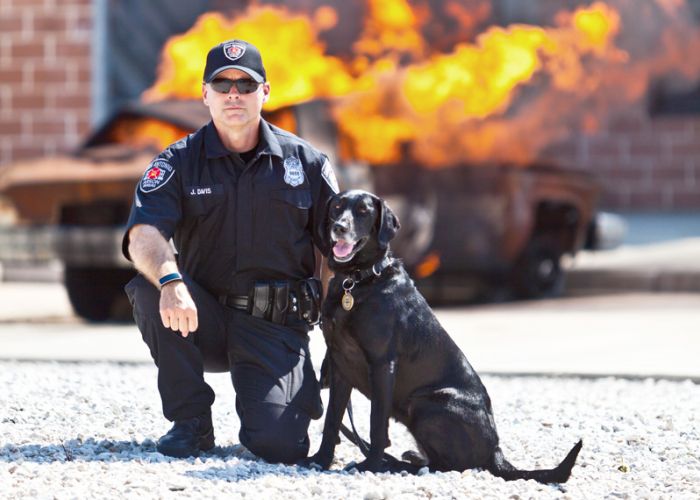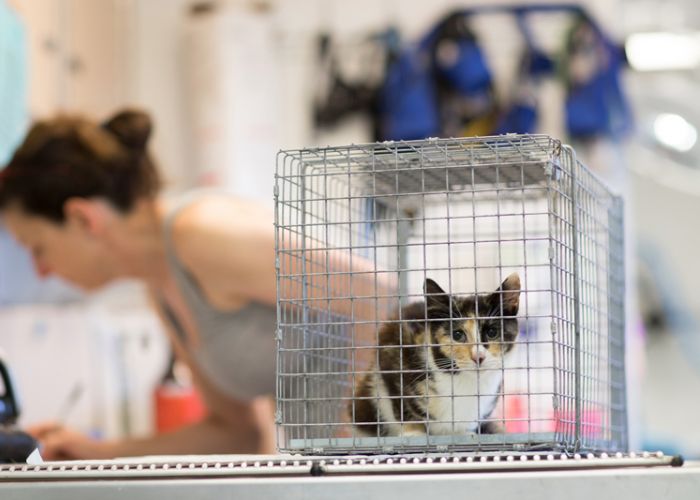The rules of attraction
A little training can go a long way toward making your dogs more adoptable
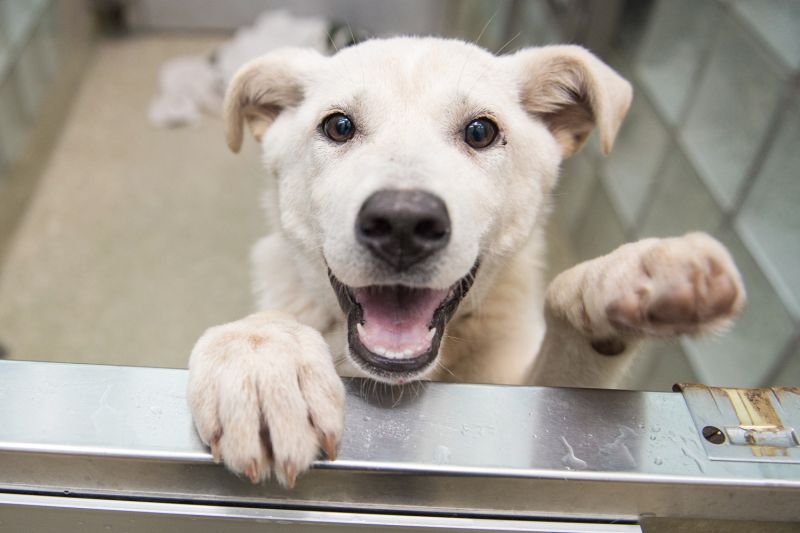
Georgia, a large mixed breed about 10 years old, turned anxious after she came to Champaign County Humane Society (CCHS) in Illinois, recalls Natalie Piper, the shelter’s animal behavior specialist and volunteer coordinator. She reacted harshly to other dogs, barking her head off when they would pass by.
Piper addressed the situation by playing on Georgia’s love of food. She would soothe Georgia by holding a treat and cooing to her in a baby voice as they walked past other dogs. Georgia earned treats when she didn’t bark. She quickly learned that tasty treats beat out harassing other dogs any day and stopped reacting. And once she started earning treats from shelter visitors, the once-shy Georgia transformed into a total ham—sitting high atop her haunches when potential adopters came to her kennel.
It’s been about a year since Georgia went home with a woman and her special-needs son. Piper recently got a call from Georgia’s adopter, saying the dog has had a life-changing effect on her son and she wishes they had found their four-legged angel sooner.
This is the type of outcome shelters want for all their dogs. But without Piper’s patient efforts to let the best Georgia shine through, her new family might have passed her by.
One chance at a first impression
What makes someone decide to take home a particular dog? According to studies published in the journals Applied Animal Behaviour Science and Animals in 2014 and 2012, respectively, the leading influencers are appearance (with adopters preferring smaller and toy breeds, puppies over adults, and shying away from perceived “fighting breeds”), followed by how the dog interacted with the potential adopter (twice as many dogs were adopted when they accepted the invitation to play and when they chose to lie closer to the person) and personality (a subjective term likely indicating a stable temperament).
A 2009 study published in Applied Animal Behaviour Science found that dogs who know a few basic commands were one and a half times more likely to be adopted. Multiple studies have noted the importance of dogs coming to the front of their kennels when would-be adopters pass by.
Dogs may get only one shot at enticing an interested adopter—and they don’t have a lot of time to make that crucial first impression. A 2001 study by the International Society for Anthrozoology suggests there is little deliberation that goes into the decision to take home a new furry family member. A dog who manages to catch a potential adopter’s eye gets about a minute-long evaluation. On average only one dog per visit is chosen for a longer interaction, which lasts about eight minutes. With mere seconds to catch a potential adopter’s eye, and less than 10 minutes to burrow into a person’s heart, how can organizations help dogs put their best paw forward?
Piper has learned from years of hands-on experience that a few trained behaviors can help create a good first impression, and this is especially important for dogs who because of age, size or perceived breed are less likely to be noticed.
To set up dogs like Georgia for success, shelters must focus on the controllable factors that influence adopters’ decision-making. A dog’s appearance, age and size are fixed characteristics, but her receptiveness to strangers (willingness to initiate interaction or respond positively to interaction) and personality are changeable, trainable traits.
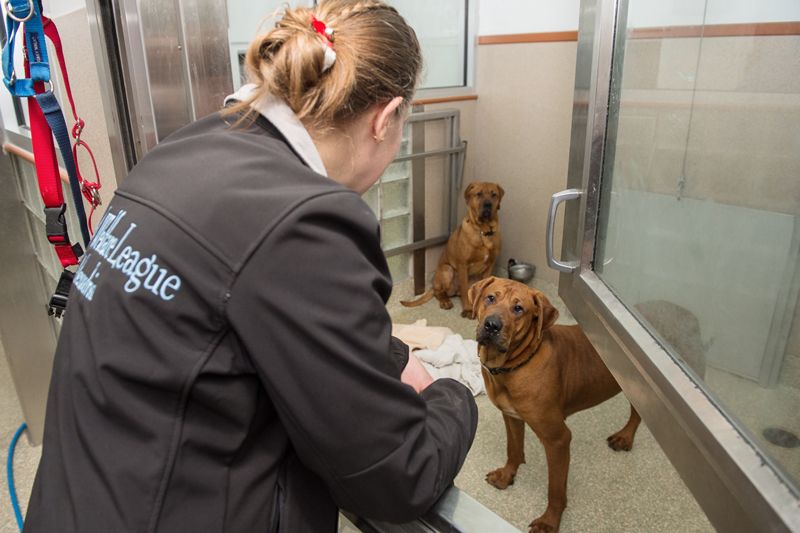
Small shifts, big rewards
Before starting a training program, keep in mind that “many of your dogs don’t need training before going up for adoption,” says Suzanne D’Alonzo, manager of strategic engagement for companion animals at The HSUS. “They’ll do fine with training while they’re available for adoption.” If you wait until your pooches are paragons of perfect manners before introducing them to visitors, your training efforts will backfire by slowing the adoption process. After all, D’Alonzo points out, what one person considers an undesirable behavior, another might find charming: “Some adopters see a dog who jumps on them as a clear sign that the dog likes them.”
At CCHS, volunteers provide mental and physical enrichment for dogs as part of their daily duties, so it makes sense to have this interaction do double duty as training. Walks, food, belly rubs and behind-the-ear scratches can all be rewards for behaviors performed on command and to reinforce good behaviors. “All volunteers do work with a clicker,” Piper explains, “since every interaction with a dog is a training opportunity.”
Several types of rewards—including treats, toys, and playtime with other dogs—can be used for training purposes, Piper says. She encourages everyone working with dogs to reward within one to five seconds of a wanted behavior (a dog’s attention span is three to five seconds) and not reward unwanted behavior (turn your back and ignore the dog to remove all the fun for a moment).
CCHS also uses clicker training to address problem behaviors, such as food guarding. Or “if a dog has a sensitivity when touched in a certain area, we do lots of work with the clicker to desensitize them,” Piper explains. She and the staff go through the kennel with a clicker and treats. To reinforce positive behaviors, “we click for quiet in the kennel as we pass throughout the day.”
With treat buckets hanging on each kennel door, CCHS enlists visitors in the training as well. A sign explains that the dog must have all four feet on the ground and be quiet before the visitor offers the reward. “It’s amazing how fast the dogs catch on,” Piper says. Dogs become receptive to humans and eager for human interaction. The impact is overwhelmingly positive: “It’s a great way for dogs to become excited about seeing strangers and warm to them right away.”
Coping with the shelter environment is another hurdle for dogs struggling to make a sterling impression. Reactive, anxious or listless behaviors are not uncommon responses to shelter life. Training can help reduce anxiety in some dogs. As Piper explains, “When a dog is scared or being unruly, the thinking part of the brain is not engaged, so we redirect them to focus on something they want and put them to work figuring out how to get it.” It’s reassuring and empowering for a dog to realize he can create a desired outcome through his actions. “Some of those that are most rambunctious end up feeling much more at ease; it takes the burden off of [them] frantically trying to figure out how to get what they want.”
To help introverted dogs, CCHS staff employ a simple “touch” command. Shy dogs are enticed with a tasty reward to touch their nose to a treat-filled hand. When the hesitant touch results in a positive consequence, fear is gradually replaced by enthusiasm. “Shy dogs blossom and come out of their shell; they gain confidence because a hand coming at them is no longer a scary thing, it’s a chance for a treat,” Piper says.
“We’ve had dogs in a holding area out of sight because the flow of strangers was too overwhelming,” Piper says, “and after training with hand touch we were able to introduce them to patrons for a visit and establish trust right away.”
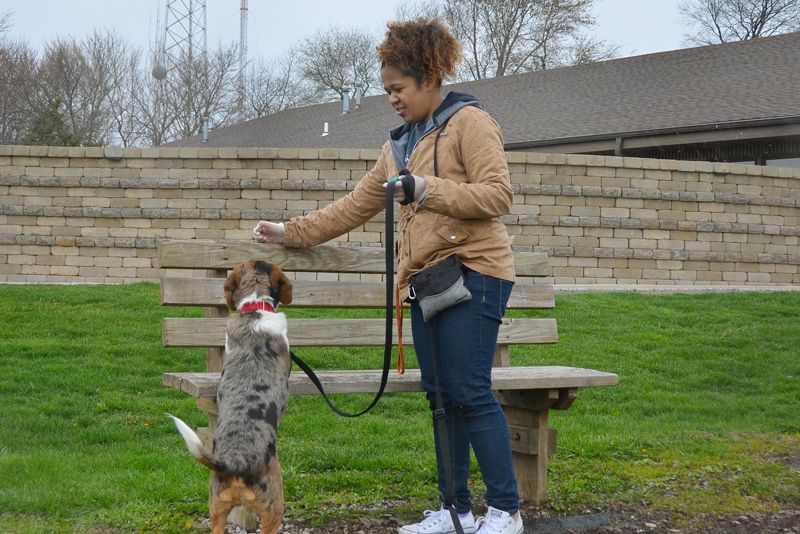
Nurturing the bond
Piper admits it can be tricky to train in the shelter environment, but she finds that her mostly volunteer staff do a great job. “They start with a crash course in training. I load them with a huge package of papers to read and videos to watch, and they donate their time and put it into action.”
The training materials are a mix of online information from Karen Pryor Clicker Training, a trusted industry resource, and online videos. Piper finds that when her volunteers have a direct hand in making a dog more adoptable, they take more personal pride in the outcome. The progress of the dog becomes a shared success.
Citing a 2014 University of Kansas study of the most effective methods for teaching shelter staff to train dogs, Megan Maxwell, a professor of animal behavior and learning at West Virginia University, provides the following tip: Have someone physically demonstrate the training behavior, then provide staff with an opportunity to practice and receive real-time feedback. This approach has proven to be more effective than reading texts or watching videos alone. That same study concluded that a dog who “displayed instructional compliance” was considered “better” and “more adoptable” by potential adopters than the same dog who was noncompliant and jumping.
“The cues we work on are not random,” says Maxwell, a certified applied animal behaviorist. “We choose appealing behaviors to replace other behaviors, such as sitting for greeting, which is the opposite of jumping for greeting, and coming when called, which is the opposite of running off into the street to get hit by a car.”
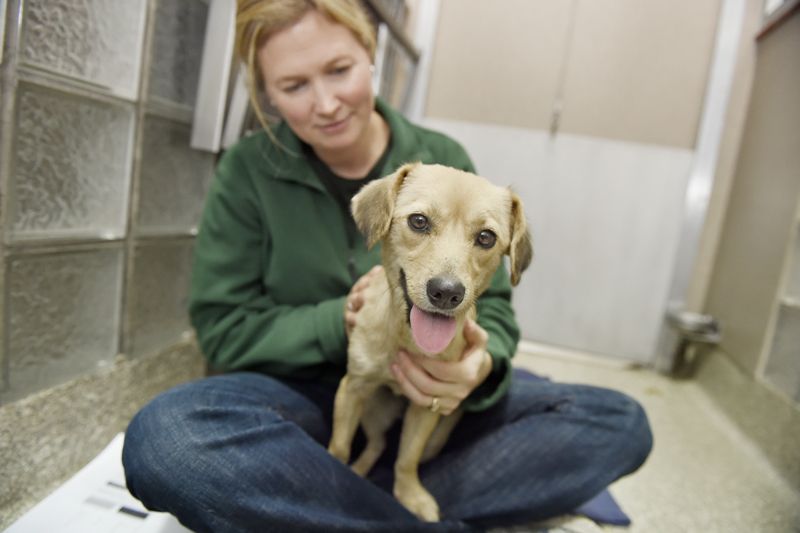
Training isn’t just about getting a dog into a home—but keeping him there. “When dogs are responsive to simple cues, they settle in more successfully,” Maxwell explains.
Maxwell advises shelters and rescues to provide adopters with information on how to continue training after taking their new pet home. “If owners do not keep practicing, using the same cues, there’s no reason the dog’s response would be as reliable and accurate as it was in the shelter during training,” she says. A simple packet explaining positive reinforcement training—what to do and what to use for rewards—can help maintain obedience for the lifetime of the relationship.
Ken Ramirez, executive vice president and chief training officer at Karen Pryor Clicker Training, views training not as a luxury, but “an important part of enhancing the quality of life for any animal.” New owners likely recognize they’ll need to find a vet, buy food and exercise their dog with walks, but many don’t realize that behavior management is another key responsibility. This lack of awareness contributes to shelter intake, Ramirez says. “So many end up in shelters because of behavior issues.”
But a little bit of training inside and outside the shelter can go a long way to ensuring a tail-wagging, belly-rubbing, face-licking friendship of a lifetime between pet and owner.


